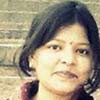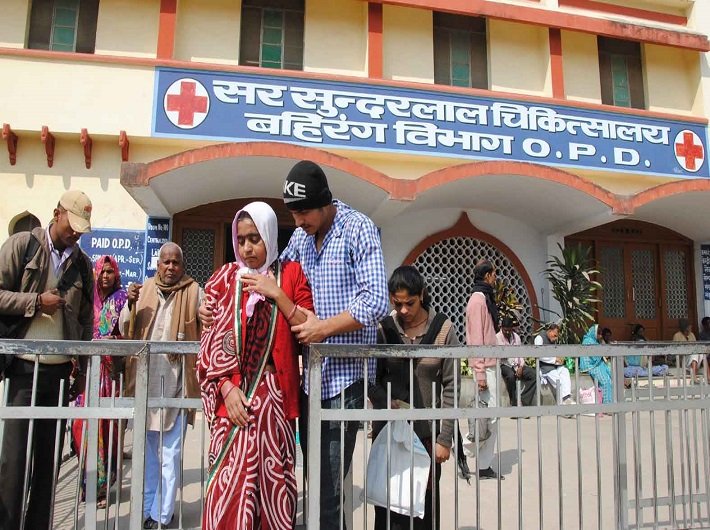A 1,200-bed hospital in PM’s constituency faces acute shortage of doctors and other staff
It has been nine months that Narendra Modi stomped home with four lakh plus margin of votes from Varanasi. He went on to become the prime minister and lives in the national capital where hospitals are attracting patients from across the world for quality medical care. His constituency Varanasi, however, has not even taken a tentative step to becoming the Kyoto that Modi famously promised during his Japan visit in August-September 2014. Varanasi is one of the 100 smart cities planned across the country for which India is seeking Japanese investment. The agreement with Japan provides for cooperation in heritage conservation, city modernisation and cooperation in the fields of art, culture and education.
But would that smart city value life? Because, in January, a 1,200-bed hospital with more than 500 staff was unable to save a patient as she was admitted four hours after the doctor completed his ‘rounds’. She could only be attended to by the doctor the next morning – 12 hours after her death.
The family members of the 47-year old, who had a burn injury and resulting infection, say she could have been saved if the specialist, under whose supervision she had been admitted, had attended to her immediately.
Ask the hospital to explain, they put it down to shortage of doctors and the burden of patients at the Sir Sundarlal Hospital (SSH) under the Institute of Medical Science (IMS), Banaras Hindu University (BHU), the ‘AIIMS for the people of eastern UP’, as per its website. How then can we reduce the burden of patients trooping in to the All India Institute of Medical Sciences in Delhi from faraway places – in this case from Azamgarh?
According to IMS director Dr RG Singh, there is a 40 percent shortage of doctors in the hospital. “As compared to government hospitals in Delhi and major towns of the country, we are way behind in catering to patients, only because of shortage of doctors and paramedical staff. Sanctioned posts in various departments are lying vacant for doctors as well as nursing and technical staff. Even the newly built trauma centre of the hospital – which is being projected as a boon for the region – could get only 12 consultants while we needed 50,” he told Governance Now.
According to Singh, the hospital caters to more than 12 lakh patients in its out-patient department every year and is the only multi-speciality tertiary healthcare available in the 400 km radius of Varanasi for people of low to medium income class coming from eastern UP, Madhya Pradesh, Chhattisgarh and parts of Bihar, Jharkhand and even Nepal.
“The region is suffering so much because of paucity of staff. Despite having funds and extraordinary facilities, we are not able to look after the patients in this region which is already a neglected lot as far as healthcare facilities are concerned,” he added.
The woman from Azamgarh was even refused first aid at the community health centre (CHC) of her village, as the staff was “not trained to handle burn injuries”. The district hospital, after failing to control even the infection from the low intensity burn, refused to treat her any further and thus the prestigious BHU hospital was the only hope for the family, but that turned out to be a mistake, as this hospital too was hardly equipped to handle the case.
According to rural health statistics 2011, about 13,794 more doctors were required at primary health centres (PHCs) and CHCs.
According to a report of the National Rural Health Mission (NRHM), India has only 1,48,366 sub-centres, 24,049 PHCs and 4,833 CHCs. As per norms, as many as four PHCs come under one CHC, catering to approximately 80,000 people in tribal/hilly areas and 1,20,000 people in the plains. This statistic reveals the sorry state of affairs of the primary and secondary healthcare.
According to the 2011 annual report to the people on health, there are 334 medical colleges in the country – 154 in the government sector and 180 in the private sector. The annual intake capacity of these medical colleges is approximately 41,500 students. The post-graduate capacity of these medical colleges is approximately 21,100. During the academic year 2011-12, 20 new medical colleges were established in the country. During this period, 4,442 MBBS seats and 2,398 post-graduate seats were added to the existing seats in the recognised colleges.
India has just one doctor per 1,700 people, compared to the world average of 1.5:1,000. The Medical Council of India’s vision 2015 document says, “India aims to achieve a target of 1:1,000 by 2031.” The World Bank report, ‘Addressing Inequality in South Asia’, points to a high level of inequality in monetary terms and human development outcomes, in health and education.
The difference between the rich and the poor in terms of health care is growing. India ranks very low on health indicators, and it spends less on health and education compared to other countries at the same levels of development – 2% of GDP is devoted to health care compared to 4% on average for such countries, and 3% on education compared to 5%.
swati@governancenow.com
(The article appears in the March 1-15, 2015, issue)

